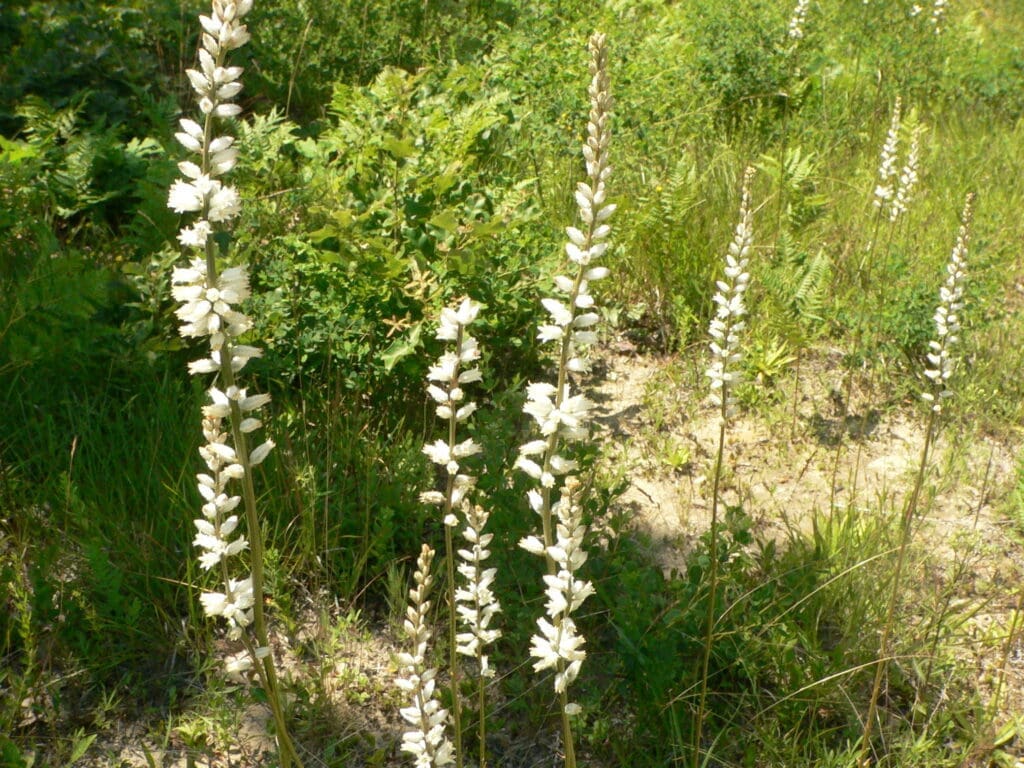
Aletris farinosa
Latin name: Aletris farinosa
Short name: Alet
Common name: Star Grass | True Unicorn Root | White Colic Root | Ague Root | Starwort
Primary miasm: Psoric Secondary miasm(s): Sycotic
Kingdom: Plants
Family: Nartheciaceae
- Symptomatology
- Remedy Information
- Differentiation & Application
Aletris farinosa is a perennial herb of the family Nartheciaceae, native to the eastern United States. It grows in dry, sandy soils, producing a basal rosette of narrow leaves and a tall spike of small, star-shaped white flowers. The root, which has a bitter, tonic taste, was traditionally used in American herbalism as a uterine tonic and restorative for women suffering from habitual miscarriage, debility, or digestive weakness. In homeopathy, the dried root is tinctured to produce the remedy, which acts principally on the female reproductive organs and the digestive tract, particularly in cases where both systems are weak and functionally depressed.
In eclectic and herbal medicine, Aletris was valued as a uterine tonic for preventing miscarriage, improving appetite and digestion, and restoring health after chronic illness. It was also used for “female weakness” associated with anaemia, prolapse, and habitual miscarriage. Occasionally prescribed as a bitter tonic for dyspepsia.
No Hahnemannian proving exists; the remedy’s pathogenesis is derived chiefly from toxicological observations and extensive clinical experience, especially by American practitioners in the late 19th century [Hale, Allen].
- Female reproductive organs – Uterine atony, prolapse, threatened miscarriage, dysmenorrhoea [Hale].
- Digestive tract – Dyspepsia, loss of appetite, flatulence.
- Circulatory system – Anaemia from chronic malnutrition.
- Musculoskeletal – Lumbar aching and pelvic dragging sensations.
- General constitution – Pale, delicate, easily fatigued women with feeble digestion and reproductive weakness.
- Rest in a recumbent position (relieves pelvic dragging)
- Gentle, regular nourishment
- Cool, fresh air
- Periods between menses
- Standing or walking for long periods (aggravates pelvic prolapse) [Hale]
- Pregnancy, particularly early months (provokes threatened miscarriage)
- Excessive exertion or strain
- Profuse menstrual flow
- Digestive overindulgence
- Helonias dioica – Uterine weakness with melancholia, but Helonias feels better when occupied; Aletris more passive and apathetic.
- Caulophyllum thalictroides – Habitual miscarriage with rheumatic or spasmodic pains; Aletris more from systemic weakness.
- Ferrum metallicum – Anaemia with flushing; Aletris has more digestive weakness and less irritability.
- Sepia – Pelvic congestion, bearing down; Sepia has more indifference to family and stronger constitutional congestion.
- Complementary: Helonias dioica, China, Ferrum.
- Follows well: China after blood loss, to restore tone; Nux vomica for digestion.
- Antidotes: Nux vomica (for excessive gastric stimulation).
Aletris farinosa is the tonic for the pale, anaemic, and atonic woman — a picture of general prostration, digestive feebleness, and uterine weakness. Its essence lies in the restoration of vitality where nutrition and reproductive function are both impaired, especially after repeated miscarriages or prolonged illness.
Particularly valuable in habitual miscarriage from uterine atony, especially if accompanied by digestive weakness [Hale]. In threatened miscarriage, low to medium potencies (Ø–3x) are often employed frequently in acute danger; higher potencies for chronic constitutional weakness. Often needed postpartum to aid uterine involution in feeble women.
Mind
- Irritability from weakness
- Apathy in chronic illness
Stomach
- Appetite lost, with debility
- Dyspepsia, atonic
- Flatulence after meals
Female
- Miscarriage, habitual
- Abortion, threatened, early months
- Uterus, prolapse, in anaemic women
Back
- Pain, lumbar, from standing
- Pain, sacral, bearing down
Generalities
- Weakness, anaemic women
- Prostration after miscarriage
- Hale, E. M., New Remedies, Clinical and Proving Records – Primary source for uterine and gastric sphere indications; clinical confirmations in miscarriage prevention.
- Allen, T. F., Encyclopaedia of Pure Materia Medica – Collated toxicological and clinical notes; emphasis on digestive and uterine weakness.
- Clarke, J. H., A Dictionary of Practical Materia Medica – Constitution, affinities, and differential diagnosis with Helonias.
- Boericke, W., Pocket Manual of Homeopathic Materia Medica – Concise keynotes on female and digestive spheres.
